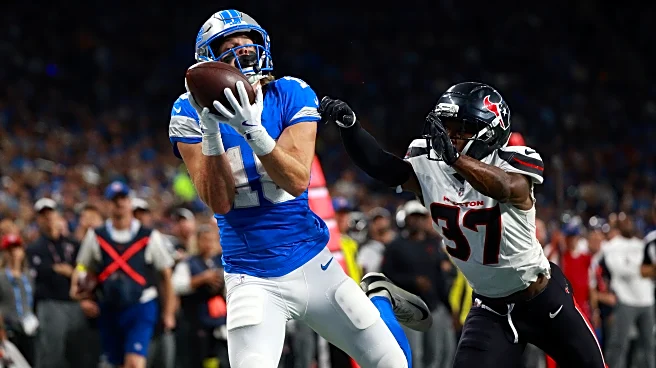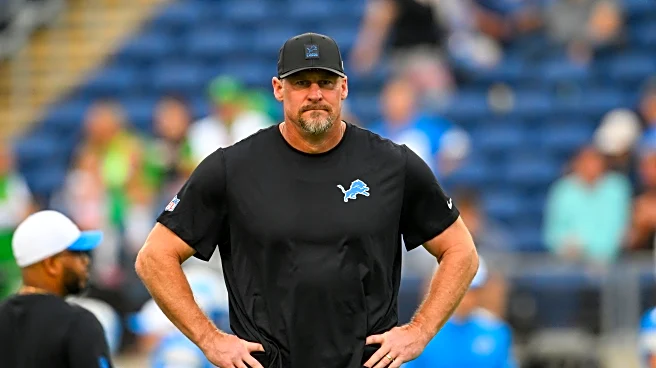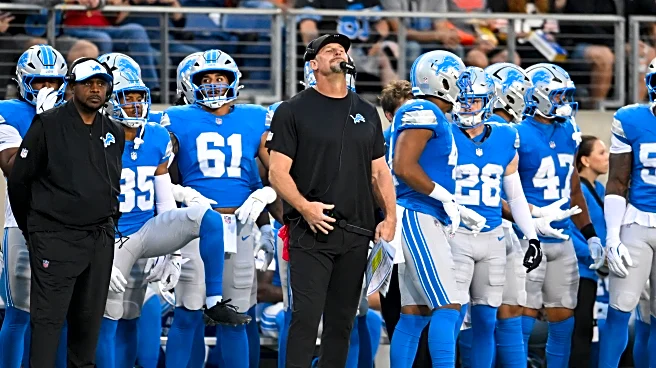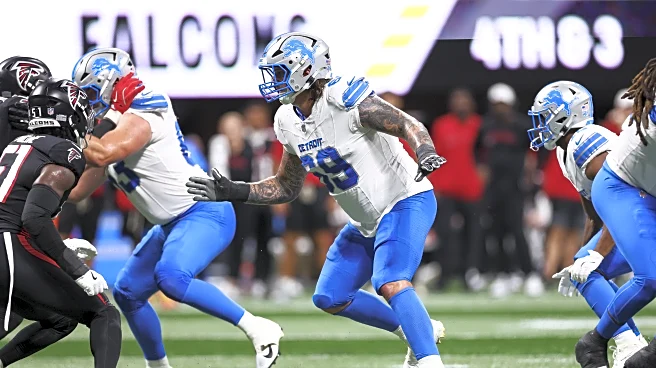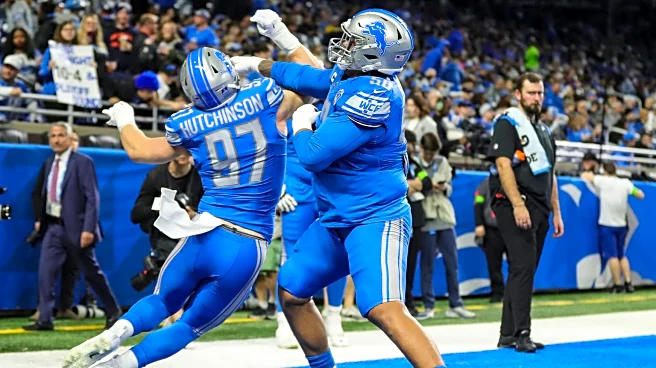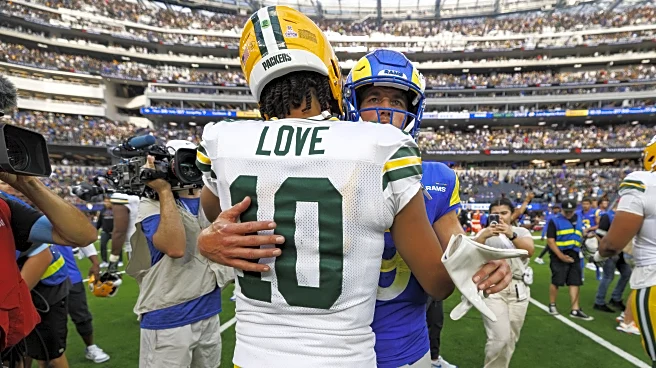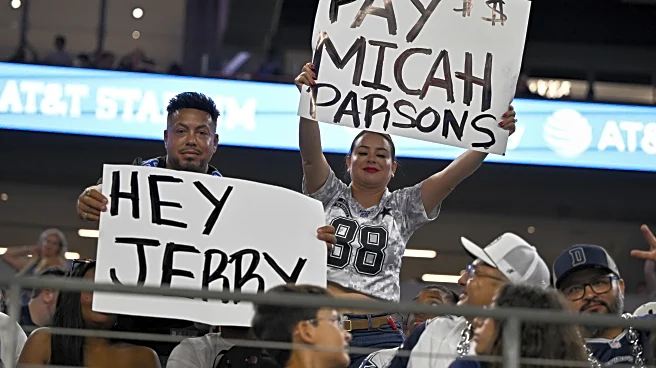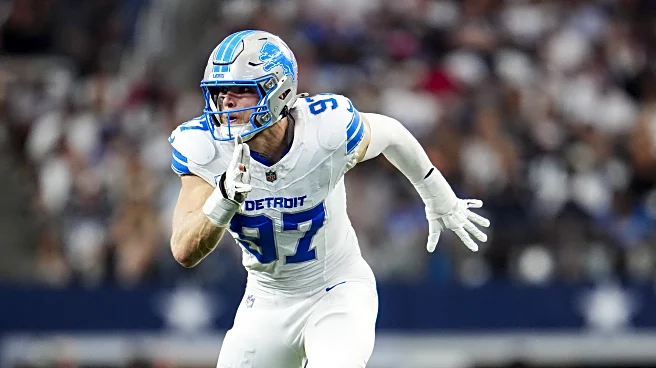
Whenever a team drafts a raw receiver in the third round with a bevy of reliable veterans ahead of him on the depth chart, it is safe to assume that his rookie season will essentially be spent learning. With Isaac TeSlaa, however, his path to the starting lineup was carved out quicker than everyone expected.
Prospects billed as “developmental” are not supposed to progress like TeSlaa has in a few short months of training camp and preseason. Amon-Ra St. Brown and Jameson Williams were entrenched as the
top receivers in the Detroit Lions’ offense, a role TeSlaa was never going to usurp in year one. However, the expectation was that by season’s end, TeSlaa could push Tim Patrick for a spot on the offense. Patrick’s calling cards in 2024 were clutch catches and run blocking, something that TeSlaa had an affinity for in college. With Kalif Raymond in the mix as well, TeSlaa would likely play fourth fiddle in the receiving room—at best.
TeSlaa blew those expectations firmly out of the water. The rookie was second on the team in receiving with 146 yards and three touchdowns over the four preseason games, but the performance extended beyond mere stats. TeSlaa, playing a majority of his snaps during the first half, frequently looked like the best player on the field. Thanks to his quickness and route running, he was getting open on a frequent basis. When he was covered, he was making remarkable acrobatic contested catches.
TeSlaa’s performance was so impressive that it made Patrick expendable. That is not something to be taken lightly. Since Brad Holmes and Dan Campbell took over, getting contributions from their veterans has been a staple of the roster. Patrick last year was a great example of this: cast off from the Denver Broncos, he found a new home in Detroit and emerged as a reliable option in the offensive scheme.
Now that the rookie has an opportunity for an expanded role, what should we expect from his 2025 season?
Today’s Question of the Day is:
What are your expectations for Isaac TeSlaa in 2025?
My answer: Around 40 receptions, 400 receiving yards, and five touchdowns.
While TeSlaa jumping into Patrick’s role is a significant sign of growth for him, I do not expect him to explode off the stat sheet this season. The main reason is the number of other mouths to feed in this Lions offense.
In 2024, Patrick finished with 33 catches for 394 yards and three touchdowns. I think TeSlaa is destined for a similar volume. Between St. Brown and Williams at receiver, as well as Sam LaPorta and Jahmyr Gibbs, there are not many targets left over. Jared Goff completed 390 passes for 4,629 yards last season. St. Brown, Williams, LaPorta, and Gibbs accounted for 3,507 of those yards. Assuming Goff has a similar total in 2025, that leaves around 1,000 passing yards to go to TeSlaa, Raymond, David Montgomery, Brock Wright, Dominic Lovett, and Dan Skipper.
I expect St. Brown’s production to remain fairly consistent (115 catches, 1,263 yards, 12 touchdowns), but I think Williams could see a true breakout this season. Those targets have to come from somewhere. Could the Lions scale back the run game? Perhaps. However, it seems more likely that the snaps come from the depth pass catchers.
However, I think TeSlaa could see a sizeable role in the red zone. For all of Williams’ success last year, most of it came via his home run speed—his stellar average of 17.3 yards per catch illustrates that nicely. In the red zone, he is less of a weapon since his speed is less of a threat. Instead, TeSlaa could see a rise in red zone snaps. His size (6-foot-4) and body control should be an asset catching end zone passes. We have already seen that a few times in preseason.
The Lions are in a good situation with TeSlaa. They do not need him to be a standout on offense right away. If he can contribute a few key catches and blocks per game, that is more than reasonable for the rookie. However, he has an incredibly high ceiling, and if he continues his tear into the regular season, I am all for expanding his role even further.
